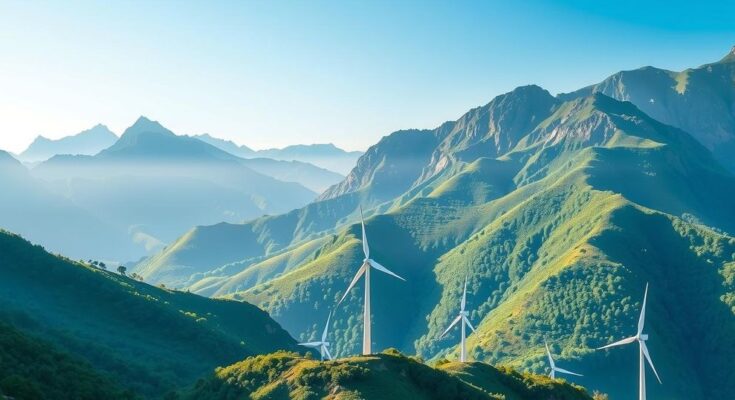Nepal aspires to achieve net zero emissions by 2045, ahead of the global target of 2050. Despite its minimal contribution to global emissions, Nepal is vulnerable to climate impacts and faces significant barriers, including policies and infrastructure. A comprehensive approach, focusing on renewable energy, stakeholder collaboration, and thorough planning is vital for success in meeting this ambitious goal.
As the global push for a sustainable future accelerates, the goal of achieving net zero carbon emissions by 2050 has gained prominence. Nepal, aspiring to graduate from a least developed country status by November 2026, has set a target of reaching net zero emissions by 2045, five years ahead of the global timeline. However, it faces significant challenges due to its developmental ambitions and unique geographical constraints.
Despite contributing approximately 0.03 percent of global carbon emissions, Nepal is acutely susceptible to climate change impacts. Erratic weather, glacial melting, and the rise in natural disasters such as floods and landslides pose severe risks for rural communities. Under the 2015 Paris Agreement, which mandates legally binding climate goals, Nepal ratified its commitment and submitted its first Nationally Determined Contribution (NDC) in 2016; however, many of its mitigation targets remain unmet due to various systemic barriers.
In response, Nepal’s second enhanced NDC was submitted in 2020, outlining specific targets aligned with its National Climate Change Policy. This new plan focuses on key sectors such as energy and transport, while also integrating adaptation strategies. While countries like China and India have set later net zero targets, Nepal’s aspirations may be stifled by its reliance on fossil fuels and traditional energy sources, compounded by inadequate infrastructure and governance.
Uncertainty in policies, particularly concerning electric vehicle adoption, complicates the execution of necessary actions. The development of robust charging infrastructure and the promotion of electric public transport are essential for sustainability. Despite these obstacles, Nepal’s vast untapped hydroelectric potential presents a significant opportunity to transition from fossil fuels and meet its energy needs sustainably.
Moving towards its ambitious net zero target necessitates careful policy planning and financial investment across critical sectors. Lessons from neighboring countries underscore the importance of thorough economic analysis when initiating shifts like organic farming. Therefore, as Nepal prepares its third NDC, a comprehensive stakeholder engagement strategy is crucial for identifying gaps and prioritizing sustainable development along its path toward achieving net zero emissions.
In summary, Nepal’s commitment to achieving net zero emissions by 2045 highlights both its aspirations and the challenges ahead. While it faces considerable hurdles, such as policy inconsistency and reliance on fossil fuels, the potential for a low-carbon transition exists through increased investment in renewable energy. The successful implementation of its NDCs will demand comprehensive planning, collaboration among stakeholders, and alignment of developmental goals with sustainability efforts. The coming years will be critical in determining whether Nepal can balance its economic growth with its environmental responsibilities.
Original Source: asianews.network




